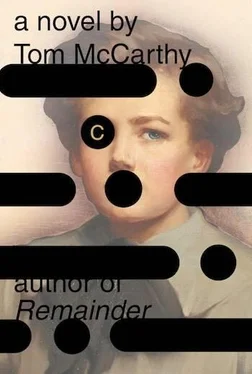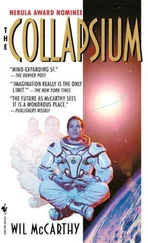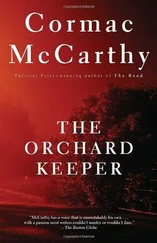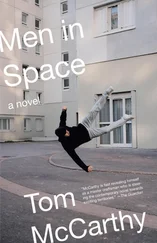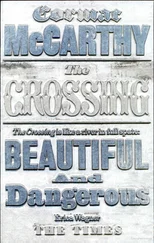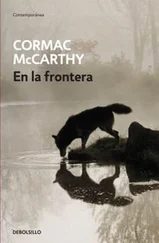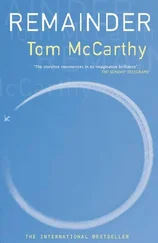Serge pushes his trolley over to the bench, pulls to a halt in front of it and leans into his mother’s knees. These give a little but not much. He looks up at her face: it’s staring at some point beyond the trees and bushes. He climbs onto the bench beside her and tugs at her shoulders. She looks down at him and her eyes look like honey, warm and murky. She smiles through him, at the ground, or something underneath it. Serge dips his finger in her honey jar, pulls it out again and sticks it in his mouth, rolling and smearing it around the inside of his cheeks. The bench’s surface has a sticky patch on it between the jar and the cup. A wasp has landed in this and is drawing off the syrup with its needle-like mandible. Its legs have broken through the honey’s surface; they tread slightly, trying to free themselves, but they’re already immersed; its mandible, meanwhile, continues drawing. Serge watches it for a while, then takes the phial and presses it down across the insect’s body, using its rim to slice apart the bridge where thorax meets abdomen. The wasp’s legs continue their treading and its mandible its drawing even after they’re no longer joined. Its thorax throbs, then stiffens and is still. Serge takes his trolley’s handle up again and pushes on.
Light dapples his shoulders as he passes beneath budding conker trees. Eventually he arrives at the stream that hems in the Crypt Park on the side furthest from the house. Beyond the stream, he can see sheep grazing on Arcady Field, diminishing in size as the field rises into Telegraph Hill. Serge gathers up the blocks and, cradling them once more in his left arm, edges towards the stream. He crouches down close to it and sees the slope of Telegraph Hill and the bright sky above it reflected in the water. He leans forward and catches sight of the top of his own head, his eyes, his nose and mouth. Then he takes a block from his left arm and places it gently on the surface of the water. The block floats. He prods it with his finger and it sinks, then bobs back to the surface again. Its upper face has a flat, in-profile football player on it. He prods it off-centre so as to spin it in the water; the block sinks and bobs, tumbling; when it comes to rest, a lone triangle is uppermost. Serge floats a second block, then a third. As he prods them they drift further from the bank. He leans out after them, so far that he can see his whole torso reflected in the water, right down to his knees, with the blue sky revolving above it like a turning lid…
And then he’s in, tumbling and turning like the blocks as water rushes up his nose and burns his throat. His hands push muddy slime and he bobs up again, his face back in the air, his legs beneath him. He grabs at the blocks but these spin and sink away from his splashing hands. He tries to breathe in but the passageway is blocked: it makes a kind of elongated gasp that turns into a splutter, then a gulping as his head goes under again. Beneath the surface of the stream, he opens his eyes. The water is bright and murky at the same time, like honey. Snake-like fronds wave and dance in its lit-up darkness; particles of mud hang between these, stirred up into canopies of blossom. The water’s right inside him; it’s not nasty anymore, just cold. And he’s no longer sinking: if anything, he’s been lifted up, by strong arms coiled round him, hugging him…
Then he’s being pushed, right in his chest, and spurts of stream are shooting from his mouth into the air before cascading back onto the muddy grass. He’s lying on the bank, and Maureen’s kneeling above him, pumping him. He vomits water, gasps, coughs, vomits more and gasps again; then, once he can breathe properly, just lies there quietly, breathing. Between him and the sky hangs Maureen’s face; it stares straight at him, sobbing. He stares back, perplexed: her mouth and eyes look funny from this angle. They’re red and fat. The eyes close and she shrieks; then she grabs him in her arms and holds him to her breast so tightly he can hardly breathe again. He slips out of her grasp, scrambles to his feet and wanders back towards his trolley-but she sweeps him up again before he reaches this and, trussing him up between her arm and waist, starts striding with him through the Crypt Park, back towards the gate.
“Incapable!” she sobs as they pass the Crypt. On the bench in front of it the teapot, cup and jar of honey have been left. “Incapable and arrogant! Can’t even bother to look after what they’re lucky enough to still have…”
She stops between the obelisk-topped columns of the Crypt Park ’s metal gate, sets him down on the grass and, holding him by the shoulders, kisses him on both cheeks. Serge squirms and tries to escape but she’s got him trapped.
“I’ll never let you from my sight again until you’re…” she begins, but her voice trails away. She kisses him once more, then sweeps him up into her arms again and strides decisively towards the house. Women look over at them from the Mulberry Orchard. Behind the women, shapes and pictures drift flat and unnoticed on the stream as it emerges from behind the Crypt Park ’s walls and oozes silently along its course.
Under the central staircase of the main house, the one above which the tapestry that shows a staircase hangs, there’s a photograph of Jacques Surin. It’s an early daguerreotype-one of the very first. If visitors enquire about it, either out of politeness or from genuine curiosity, they’re fed a tale that Versoie’s residents have heard so many times it’s taken on the aspect of a biblical fable involving plagues, exoduses, and long lines of “begot”s.
It goes something like this: When, in November 1796, Surin received from his recently deceased cousin-the baron de Saint-Surin, a resident of Lower Saxony whom he had never met but who, like him, was a second-generation réfugié-a chrysoprase ring, a round Dresden china box, a gold medal of Prince Henry of Prussia and a significant amount of money, he upped sticks from London and, acquiring a large plot of land in West Masedown, named it Versoie. He brought with him an entourage at once human, animal, vegetable and mechanical: spinners and dyers who had worked for him in Shoreditch, canaries whose chirping had drowned out the sounds of the machines but annoyed his English neighbours no less for that, worms and mulberry trees descended unadulteratedly from larvae and seeds smuggled out of La Rochelle one hundred and nine years earlier and a loom whose dis- and reassembly had presented a challenge no less daunting than that facing the architects of acropolises and mausoleums. To accommodate them all, Surin, who liked to style himself as a latter-day Noah despite the fact that all his offspring, and his offspring’s offspring, were female, built on the south-west corner of his new estate a complex of houses and workshops linked by doors, corridors and yards. It is into the outermost of these, the Hatching Room, that Surin’s several-times-great-grandson Serge, seven and sprightly, has just bounded from the garden.
Here, he finds two women kneeling over boxes. The boxes are small and shallow: the size of writing-table trays or vanity cases. Their lids have been removed, and the women are peering inside to watch moths laying eggs. The moths are females of the phylum Arthropoda: Bombyx mori. They have creamy white, scale-covered wings, the upper two of which are threaded with brownish patterns. Their bodies are hairy. They crawl slowly and groggily around each box’s paper-lined floor, stopping intermittently to let more tiny black baubles fall from their genital region. From their rudimentary mouthparts they dribble a gummy substance, which they smear onto the paper with their legs: as the eggs fall they stick to this, dotting the white with black. Scattered and sparse at first, the dots grow into small constellations, then whole galaxies made up of thousands of black stars. When these dark clusters have become so thick that they threaten to eclipse the space between them, the women pick the moths up one by one and, pinching their wings between their thumb and middle finger, deposit them inside another open box to continue their laying there. As the intermittent flow and drop of eggs from each individual moth dries up, the moth is picked up for a final time and cast onto the floor to die while a new moth is introduced into the box to begin laying in her place.
Читать дальше
